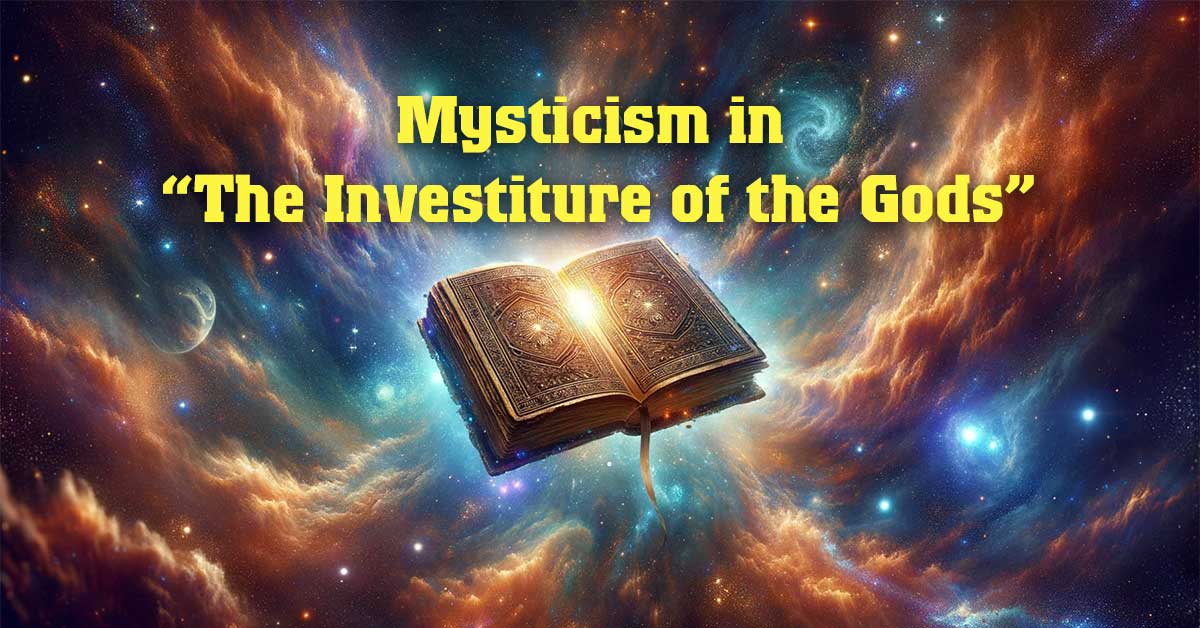Buddhism originated in India, a country where religious devotion takes precedence and holds a dominant position. Historical records reveal that India is structured into four classes, with Hindu priests leading, specializing in offerings, prayers, and rituals.
The Brahmin class, possessing absolute authority, governs the thoughts and lives of successive generations of royal families and the entire society. They assert a religious monopoly, directly performing ceremonies for Gods and Spirits, with Maha-Brahma as their supreme deity. The Brahmin priests oversee daily rituals, purification ceremonies, and sacrifices, and impart teachings from the Vedas, considered the Bible of Brahmanism. The clergy is further categorized into three levels of initiation:
– Monks at the supreme level are those of the Brahmin order who no longer directly engage with the common people. This tier focuses on studying both the tangible and metaphysical forces within the universe.
– Monks at the intermediate level are practitioners skilled in astrology, prophecy, communication with spirits, and the execution of supernatural feats. They specialize in referencing, interpreting, and practicing the fourth Veda, Atharva Veda, a distinguished collection containing various incantations.
– Monks at the lower level are the priests who perform regular ceremonies and serve in temples. This group typically recites the first three Vedas of Atharva (Rig Veda, Yajur Veda, Sama Veda). The lower clergy must undergo twenty years of study to advance from the lower to the intermediate level and another twenty years to reach the supreme level. The leadership of all three levels is overseen by a head of the religious community, supported by a council comprising more than seventy monks.
Each Brahmin monk must adhere to ten precepts:
1. Humility
2. Righteousness
3. Moderation
4. Truthfulness
5. Purity
6. Control of the senses
7. Proficiency in Atharva Veda
8. Understanding of the divine Brahma
9. Honest Speech
10. Avoidance of anger.
Prince Siddhartha was born into the royal lineage in a society where both the aristocracy and commoners wholeheartedly embraced Brahminism. His early education centered around the teachings of the Atharva Veda. The ultimate goal of the entire populace was to achieve the highest Brahminical status in society and unite their souls with the Supreme Deity Brahma. The prince’s decision to renounce worldly life was also influenced by these profound convictions.
Not content with the mere theoretical teachings of the ancient scriptures on the path, prince Sidhartha cast aside all constraints. He wandered alone, dedicating himself to the quest for truth. He sought guidance from various teachers, practiced different methods of meditation, endured hardships as well as indulgences, and faced the challenges posed by demonic forces. Ultimately, he attained enlightenment beneath the Bodhi tree.
Dismissing all superficial religious doctrines found in traditional sutras, prince Sidhartha renounced all personal attachments and embarked on a solitary journey, dedicating himself to the pursuit of Truth. He sought guidance from diverse teachers and gurus, explored various methods of spiritual cultivation including the ascetic path and the “Middle Way,” faced challenges posed by demonic forces, and ultimately attained enlightenment beneath the Bodhi tree.
Understanding the Buddha’s internal experiences or realizations can be challenging, but according to Buddhist sutras, he attained liberation and became the Buddha, endowed with numerous transcendent powers. These include the ability to recall past lives, perceive the cycle of birth and death, and eliminate all defilements and religious doctrines.
According to Buddhism, after an extraordinary six-year battle, monk Gautama, at the age of 35, successfully eliminated all impurities and defilements, realizing the true nature of all Dharmas. He attained the title of Buddha, signifying omniscience and complete enlightenment. His first teaching took place at the Mrigadava (Deer Park) to five disciples, led by Ajanata-Kondanna, focusing on the “Four Noble Truths” and the “Noble Eightfold Path.” This sermon, known as “The first turning of the Dharma wheel,” attracted numerous heavenly beings and Brahma, who praised him endlessly. Over the next forty years, Buddha continued to expound the Dharma and accept disciples until his passing. Despite no written records during his lifetime, research into Buddhism suggests that his teachings were orally transmitted to disciples. After his demise, his followers convened the first Council, led by Kasyapa, to compile his teachings from memory.
A century after Buddha’s passing, the integrity of his Dharma began to erode as disagreements among his close disciples arose, leading to distortions of his original teachings. Within the monk community, conflicting arguments emerged, prompting the need for another gathering to organize and clarify Buddha’s doctrines. During this period, heated debates erupted between clergy and monks regarding the true essence of Buddha’s teachings. These conflicts were fueled by factors such as sectarian rivalry, the pursuit of recognition, differing intellectual perspectives, and diverse personal interpretations among the clergy.
This period marked the division of Buddhism into two distinct factions: the Sthavira and Mahasanghika. The Sthavira, or “Teaching of the Elders,” comprised elder conservative monks who asserted themselves as the exclusive custodians of Buddha’s original teachings.
In contrast, the Mahasanghika, or “Members of the Great Order,” consisted of younger monks with a more liberal approach to Buddhist study and interpretation. Despite the intense debates during this second Council, proceedings were conducted orally, and no written records were kept.
After that period, the conflict between the Sthavira and the Mahasanghika escalated, making it impossible to mend the divide. Influential leaders in each sect authored numerous high-quality essays to defend and propagate their philosophies, solidifying their reputations and vehemently criticizing rival perspectives. Thanks to these essays, various sects later compiled extensive collections of doctrines.
Four hundred years after the passing of Buddha, during the reign of King Asoka (268-232 BC), the sangha had fragmented into more than twenty sects, with ten aligned with the Sthavira and ten with the Mahasanghika.
The recording of Buddhist teachings finally took place during the third Council under the rule of King Asoka and Kanishka. Buddhist doctrines were transcribed in two languages: Sanskrit in North India and Pali in South India. Subsequently, Buddhism faced a decline on the Indian subcontinent due to the competition with Hinduism and Islam. However, its preservation continued through dissemination to neighboring countries.
The sutras written in Pali, distinctive of the Theravada (smaller vehicle), spread to Southern India and evolved into the Southern Sect. Conversely, the sutras written in Sanskrit were propagated to regions outside of India, giving rise to the Mahayana or Northern sect.
The Buddhist faith has thrived and expanded across Asian countries over the past thousand years. The Theravada sects are present in Ceylon, Thailand, Cambodia, Laos, and Burma, while the Mahayana sects are found in Tibet, China, Japan, Korea, and Vietnam. Both the Theravada and Mahayana traditions have their distinct three collections of Sutras, Laws, and Essays.
Contemporary research on the Southern and Northern Buddhist sects relies on sutras written in Pali from Ceylon, as well as those written in Chinese or Tibetan dialect, as the original sutras from India were destroyed by Islam and are therefore incomplete.
The two sets of sutra collections of the Tripitaka (Three Baskets) that were circulating at that time were:
- The Tripitaka collections of the Southern Sect, known as the Agamas, consist of the Digha-Nikaya (Collection of Long Discourses), the Majjhima-Nikaya (Collection of Medium-Length Discourses), the Samyutta-Nikaya (Collection of Grouped Discourses), the Anguttara-Nikaya (Collection of Discourses on Numbered Topics), and the Khuddaka-Nikaya (Collection of Miscellaneous Discourses).
- The Tripitaka of the Northern Sect includes the Nikayas, the Saddharmapundarika Sutra (Lotus of the Good Law Sutra, commonly known as the Lotus Sutra), the Vimalakirti Nirdesa Sutra, the Avatamsaka Sutra (Garland Sutra), the Lankavatara Sutra, along with a group of writings known as the Prajnaparamita (Perfection of Wisdom), the Diamond Sutra (Vajracchedika Prajna Paramita Sutra), the Amitabha Sutra, Nirvana Sutras (Mahaparinirvana Sutra), and others.
The presence of two canonical sets from Theravada and Mahayana, each claiming to represent the original teachings of the Buddha, does not suffice as conclusive evidence for scholars with a scientific mindset. They question the solidity of such a conclusion, recognizing that the initial seeds of Buddhist thought did not give rise to the vast forest of Buddhist philosophies seen today. The authenticity of the Buddha’s original message has been and will forever remain a subject of doubt.
Despite the monks’ attempts to consolidate all of Buddha’s teachings into either Theravada or Mahayana through a doctrine about the Five Periods encompassing all of the Buddha’s Dharma, they were unable to appease the hostile parties of that era or address the questions posed by other Buddhist scholars. The five periods of the Buddha’s Teachings are as follows:
I. In the first period, immediately following his enlightenment, the Buddha remained under the Bodhi tree for an additional twenty-one days. During this time, he experienced a state of heightened spiritual awareness.
The teachings that emanated from this profound realization were so profound that they transcended ordinary comprehension and were understood only by divine beings. These teachings are documented in the Avatamsaka Sutra, hence this period is referred to as the Avatamsaka.
II. In the second period, the Buddha journeyed to Varanasi (Deer Park). Recognizing that his teachings were challenging for others to grasp, he simplified them and began preaching the Four Noble Truths and the Twelve Causes. This period is known as the Agama.
III. In the third period, the growing popularity of the Buddha’s doctrine led to conflicts with other religious groups and philosophical schools. In response, the Buddha defended his teachings, and all discussions and rationalizations from this time are recorded in the Vimalakirti and the Tripitaka. The teachings from this period reflect a synthesis of Theravada and Mahayana thought, known as the Vaipulya (extensive).
IV. In the fourth period, the Buddha delivered lectures to disciples with superior intellect, focusing on the supreme principles of the universe. This period is known as the Prajna (wisdom).
V. In the fifth period, Buddhism reached maturity as the Buddha expounded the Bodhisattva Vehicle doctrine to his most advanced students. This phase is referred to as the Lotus-Nirvana.
Accepting the classification of all Theravada and Mahayana teachings according to the perspective outlined above presents a challenge for Theravadins. However, from a logical standpoint, regardless of Theravada or Mahayana distinctions, all theories trace their origins to the continuous and persistent efforts of numerous monks and dedicated scholars. The progenitor of these teachings was the brilliant Sakyamuni, followed by many other patriarchs over an extended period. A collective of religious scholars, whether renowned or anonymous, has committed itself to the pursuit of Truth, developing various methods of spiritual healing for humanity that have evolved into today’s Buddhism.
In contemporary times, intellectuals are less concerned about whether a particular sutra originated from the Buddha or other sages. Instead, they prioritize assessing its authenticity, utility, and practical benefits. Buddhist monks are also reminded not to let blind faith or superstition obstruct their understanding of the Buddha’s teachings. They are encouraged to adopt a mindset that values critical inquiry over unquestioning acceptance. Rather than blindly accepting teachings based on tradition, popularity, or authority, monks are urged to question with reason, experience, and verify whether a belief aligns with truth.
If we adopt such an approach to evaluate Buddhism and its teachings, scrutinizing their practicality, rationality, and usefulness, it resembles the examination of other scientific disciplines that benefit humanity. Without this method, Buddhism might face doubt, ridicule, or indifference from many, as it could be viewed as obscured by superstition, fanaticism, and the illusions of the uninformed.
We will systematically delve into the thorough and unbiased frameworks provided by Buddhism, with the goal of liberating ourselves from delusion. This exploration is meant for both researchers and believers, past and present, fostering an understanding rooted in objectivity and scientific inquiry.
The “Middle Way” of Buddhism
During the time of Sakyamuni Buddha, Indian society had over sixty different religious philosophies. Each school presented a distinct method of cultivation and asserted that its path was the exclusive way to attain supreme enlightenment.
Before devising his own spiritual cultivation methods, Prince Siddhartha explored various paths. According to Buddhist sutras, Sakyamuni Buddha attained Buddhahood and delivered his inaugural sermon, turning the wheel of Dharma, to a group of five monks led by Kodanna. Subsequently, the Theravada tradition hailed this teaching—The Four Noble Truths—as the most admirable and unprecedented Truth.
The Dhammacakkapavattana Sutra states: “Monks, until the absolute and true realization of mine, with its three aspects and twelve permutations concerning these Four Noble Truths, became truly clear, then I did claim to the world, which is composed of Devas, Maras, Brahma, among the Bhiksus, Brahmin, heaven, and the common people that I have realized the unexcelled, supreme right knowledge.
During that time, numerous earth Devas were present, acclaiming, “At Varanasi, in the Game Refuge at Isipatana, the Blessed One set in motion the unexcelled Wheel of Dharma, which cannot be elucidated by priests, Devas, Mara, Brahma (the Creator-god of Hinduism), or anyone else in the cosmos.” The Theravada sutra also mentions that at that moment, the ten thousand-fold cosmos trembled and shook violently.
What exactly did Sakyamuni Buddha convey about his realization of liberation from suffering to Kodanna’s group? Why do the Theravada sutras describe it as the supreme realization unknown even to men, Devas, Devas Kings, and God?
Let’s delve further into “The Teaching that Set the Wheel in Motion” about the Four Noble Truths. The Buddha addresses the monks, stating: “O bhikkhus, there are these two extremes that one who cultivates monkhood should avoid: The one that is devoted to sensual pleasure is vulgar, common, ignoble, unprofitable, and not worthy of the nobles and sages. The one that is devoted to self-affliction is painful, ignoble, unprofitable, and not worthy of the nobles and sages.”
By steering clear of these extremes, the Tathagata has realized the “Middle Way—the way that produces vision and knowledge and leads to serenity, superior knowledge, self-awakening, and Nirvana. The Buddha goes on to explain: O bhikkhus, this is the ultimate truth about suffering (the noble truth of suffering): Birth is suffering; Decay is suffering; Death is suffering; Sorrow, Lamentation, Pain, Grief, and Despair are sufferings; not to get what one desires is suffering; in short: the five groups of Existence (clinging aggregates) are sufferings.
“And now, bhikshus, this is the supreme truth of the origination of suffering (Noble truth of the origination of suffering): It is the lustful cravings that cause rebirth. These cravings intertwine with lust and passion, seeking fresh delights here and there in life. It is craving that clings to sensual pleasures, the craving that clings to existence, and the craving for self-annihilation (emptiness after death).”
“And now, bhikkhus, this is the supreme truth of the elimination of suffering (the Noble Truth of elimination of suffering): it is the elimination, the renunciation, the relinquishment, and the letting go of such sensual craving.”
“And now, Bhiksus, this is the Truth about the path leading to the termination of suffering: precisely, this Noble Eightfold Path” (Samyutta Nikaya).
We need to delve into how Buddhist monks explained the philosophy known as “the Middle Way” in the Sutra: “Setting the Wheel of Laws” (Dhammacakra Pravartana). During the time of the Buddha, Indian society was dominated by two main schools of thought: the “Sasvata” and the “Uceda.” The Sasvata school believed in the permanence of the soul and the body, while the Uceda school maintained that both were destroyed after death. The Uceda school argued that death was inevitable for everyone, leading to the cessation of all existence. Therefore, since life was considered the only reality, indulging in pleasure was deemed essential. Morality was dismissed as an illusion, and religion was seen as irrational. According to this perspective, pleasures were seen as genuine, and there was no need to restrain cravings and instincts, as they were viewed as inherent human traits.
On the other hand, the Sasvata sects, which advocated for the permanence of the soul, introduced various peculiar methods of spiritual cultivation to entice the superstitious and uninformed. Some Sasvata sects engaged in practices involving nudity, filthiness, self-mortification, and extreme asceticism, even resorting to eccentric rituals such as prolonged standing on one leg.
Prince Siddhartha dedicated himself to the practice of asceticism for several years, severely restricting his food intake to the point of emaciation and exhaustion, eventually collapsing from fatigue. During this time, he came to realize the futility of self-mortification, understanding that it only resulted in bodily deterioration rather than leading to liberation and a return to a normal, healthy life.
The five initial bhikshus who had practiced alongside the prince were disheartened by his decision and parted ways, asserting, “Monk Gautama now indulges in luxury. He has abandoned his efforts and returned to a comfortable life.” The entrenched belief in the effectiveness of devoted asceticism and an unconventional lifestyle as the path to liberation proved challenging to dispel in the Hindu mindset.
Therefore, in his first sermon to his initial five companions, the Buddha emphasized the significance of the Middle Way. The Middle Way advocates neither indulging excessively in worldly pleasures, as proposed by the Uceda (believers in the annihilation of the soul), nor becoming overly attached to the practice of asceticism.
The practice of the Middle Way may appear straightforward at first, but in reality, it involves numerous variables and interpretations. Determining the balance between enjoying life without succumbing to sensual desires and practicing restraint without embracing asceticism is challenging to define precisely.
During the time of the Buddha, Devadatta harbored ambitions to replace him and take leadership of the sangha for himself. To achieve this, he disguised himself as holy and pure, preaching in alignment with Hindu beliefs in asceticism and unconventional practices. Devadatta pressured the Buddha to implement five rules for all sangha members:
- Monks should spend their entire lives in the forest.
- Monks should decline invitations to meals, sustaining themselves solely on alms obtained by begging.
- Monks should wear robes made only from discarded rags found in trash piles and cemeteries.
- Monks should reside at the base of a tree rather than under a roof.
- Monks should adhere to a vegetarian lifestyle for life.
In the presence of Buddha, Devadatta argued his case by posing the question: “Monks, consider the rules I proposed and the Buddha’s teachings. Whose statement holds more authority—the Tathagata’s or mine? If you seek liberation from suffering, follow me.”
Devadatta, by promoting outward appearances and adopting an unusual and eccentric dress code, attracted many novice monks who admired his saintly virtues but lacked practical experience. As a result, a significant number of monks left the Buddha to follow Devadatta. Later, the Buddha sent Sariputta and Moggallana to persuade these lost monks to return.
This tendency to emphasize virtues and adopt peculiar practices to impress and mislead others about one’s reputation and holiness was prevalent among Hindus during that period. This was particularly true for those lacking real talent but driven by ambitious desires for liberation.
The same theme resurfaced after the Buddha’s death. According to the tradition of the Buddhist Order of Elders, monks who renounced secular life were expected to maintain celibacy in the monastery to facilitate spiritual cultivation and dedicate their time to promoting the doctrine. However, as this concept gained popularity, individuals inclined toward extraordinary feats exaggerated the matter by spreading rumors that monks had completely overcome and eliminated all sexual desires.
Despite these rumors, during a meeting of monks, a bhikshu came forward and asserted that even those who had achieved the rank of Arhat continued to experience nocturnal emissions.
Following the Buddha’s passing into Nirvana, disputes about the Middle-Way doctrine for liberation emerged among various sects.
More than 40 sects claimed rightful inheritance of the Buddha’s teachings, with notable differences outlined in the Theravada and Mahayana traditions, the two principal Buddhist schools. Over time, these differences in opinions about the Buddha, the cosmos, human life, paths to liberation, and more have become increasingly contradictory.
Theravadins have often labeled Mahayana as “the heretics,” accusing them of forgetting the Buddha’s history and deviating from his teachings. Conversely, Mahayana has criticized Theravadins as “the outsiders,” branding them as narrow-minded, superficial, arrogant, and overly reliant on scripture, and therefore unfit to represent the essence of Buddhism.
This article exclusively examines the distinctive characteristics of both sects within the context of contemporary civilization and sociological realities. It relies on objective principles and real-life observations to provide a comprehensive understanding of the subject matter.
To start, Theravadins believe that life is comparable to an ocean of sorrows, devoid of any deities to rescue individuals from the misery of this world. Consequently, individuals must take it upon themselves to sever the rope of sensual cravings that bind them to the cycle of rebirths. To escape this world, one must strive to avoid life’s tribulations, act selflessly without ego, and renounce all worldly attachments as they are mere illusions to be despised. According to this viewpoint, there is only one viable path— that of monkhood— which holds the potential to lead to liberation. As for the majority of laypeople, there is little hope for them in this regard.
This perspective embodies a profound disillusionment with both the world and oneself, showcasing a notably self-centered approach to salvation. It represents the objective and guidance offered to humanity by Theravada Buddhists, which has often been perceived as pessimistic by many. Despite their teachings focusing on eradicating the ego, Theravada Buddhists have left ample evidence suggesting that they haven’t entirely succeeded in overcoming their pride.
This pride extends to their religious leaders, denominations, religion, and monastic rank. In some instances, it seems that their egos have grown even larger than those of others.
To better understand the observations mentioned earlier, let’s delve into key insights from the Theravada sutras.
- Majjhima Nikaya – Ariyapariyesana Sutra #26 says this: On his way, the Buddha met the wandering ascetic Upaka, who asked him: Who is your teacher? Whose teachings do you propagate? Why did you leave family life? The Buddha answered: “The Buddha has overcome everything and knows everything. The Buddha has left behind all attachments, the Buddha has eliminated all desires, the Buddha has realized all there is to know, and therefore has no teacher. No one is Buddha’s teacher; no one is His equal, including the Deities and Brahma. The Buddha is perfect in this world, an Arhat. The Buddha is the supreme Teacher; the Buddha is the only supreme teacher. There is only one enlightened, peaceful, and serene Buddha. Calm and without desires, the Buddha is going to the city of Kaasi to set the wheel of the Precious Teaching rolling in this blindfolded world, and to sound the drum of no beginning and no end.
- The chapter 5 of the “Buddha and his Teachings” by Venerable Narada says this: On one occasion soon after the Enlightenment, the Buddha was dwelling at the foot of the Ajapāla banyan tree by the bank of the Neranjarā river. As He was engaged in solitary meditation the following thought arose in His mind:
“Painful indeed is it to live without someone to pay reverence and show deference. How if I should live near an ascetic or brahmin respecting and reverencing him?”
Then he thought: “Should I live near another ascetic or brahmin, respecting and reverencing him, in order to bring morality to perfection? But I do not see in this world including gods, Māras, and Brahmas, and amongst beings including ascetics, brahmins, gods and men, another ascetic or brahmin who is superior to me in morality and with whom I could associate, respecting and reverencing him.
“Should I live near another ascetic or brahmin, respecting and reverencing him, in order to bring concentration to perfection? But I do not see in this world any ascetic or brahmin who is superior to me in concentration and with whom I should associate, respecting and reverencing him.”
“Should I live near another ascetic or brahmin, respecting and reverencing him, in order to bring wisdom to perfection? But I do not see in this world any ascetic or brahmin who is superior to me in wisdom and with whom I should associate, respecting and reverencing him.”
“Should I live near another ascetic or brahmin, respecting and reverencing him, in order to bring emancipation to perfection? But I do not see in this world any ascetic or brahmin who is superior to me in emancipation and with whom I should associate, respecting and reverencing him.”
Then he thought: “How if I should live respecting and reverencing this very Dhamma which I myself have realized?”
Indeed, wisdom often manifests in humility and simplicity. The ancient Greek philosopher Socrates (469 – 399 BC) encapsulated this idea with his statement: “That which I know the clearest and best in my life is that I don’t know anything.” Similarly, Confucius echoed the sentiment, proclaiming, “That which we know that we don’t know is the right knowledge.” These profound reflections emphasize the humility of the wise and the sages.
Contemplating this, one might wonder how a great leader like Buddha, renowned for his enlightenment, would respond to the flattering praises and statements full of vanity attributed to him by his disciples. Additionally, it raises the question of what scientific-minded individuals would think about a spiritual path structured around the eradication of egoism.
The inclination to elevate one’s teacher to the foremost position globally, with the intention of reflecting positively on oneself, becomes evident in the following narrative: “As the Sangha is also endowed with greatness, there is also reverence in Buddha for the Sangha.
This discourse, delivered by the Buddha while residing at Jetavana, Sāvatthi, long after the establishment of the Order of the Sangha, illustrates his deep respect for the Sangha. The Buddha, demonstrating this reverence, requested Queen Mahā Pajāpati Gotami to offer a specially prepared robe to the Sangha”, as detailed in “Buddha and His Teachings” by Narada.
Over the past thousand years, Mahayana Buddhists have developed their doctrine with several intentions. Firstly, it aims to prevent Theravada Buddhists from becoming overly rigid and to correct what may be perceived as an excessively pessimistic outlook on life. Secondly, it seeks to address any exaggerated vanity that might exist regarding themselves and their doctrines. Another objective is to prompt a realization of their duty and responsibility within society.
Furthermore, Mahayana teachings aim to convey the message that Theravada practitioners have not attained enlightenment and are, in many respects, considered inferior even to laypersons. This serves as a lesson in humility, discouraging any tendency towards boasting or arrogance that may arise in interactions with Heavenly Beings or Deities across different realms. The doctrine serves as a reminder to relinquish any illusion of superiority over nature and to align with its laws, emphasizing the superficiality of their understanding.
Ultimately, Mahayana teachings caution against mistaking oneself for All-knowing and deserving of offerings and respect from the world. They highlight the reality that, despite any perceived virtue, their behavior is, in fact, quite ordinary.
It is true that Theravada monks hold the teachings of the Four Noble Truths and the Noble Eightfold Path in high esteem, considering them to be supreme.
However, Mahayana subtly suggests that these teachings are primarily intended for individuals with less developed minds, slow learners, and those with poor spiritual roots, whom Buddha must specifically guide. In contrast to the Theravada perspective, Mahayana offers a different viewpoint.
Despite rejecting assistance from highly virtuous monks in both worldly and heavenly realms, Mahayana directs attention to the ten realms. Here, numerous Buddhas and Bodhisattvas, who have attained Buddhahood through many lifetimes, stand ready to provide support and assistance. Mahayana gently imparts the wisdom that sorrow serves as the origin of enlightenment, addressing the fear of sorrow. While Theravada practitioners may seek to escape the world in pursuit of merging with Nirvana, Mahayana reveals that life and death themselves constitute Nirvana. Furthermore, for those solely focused on personal liberation and abandoning others in this world, Mahayana teaches that primordial Buddhas continue to assist sentient beings. These Buddhas vow not to enter Nirvana until all beings find liberation. In response to the misanthropic stance of Theravadins, Mahayana advises a return to normal life. It emphasizes fulfilling obligations to humankind, country, family, and the Triple Jewels before contemplating self-liberation.
Despite any assumptions they may hold about their enlightenment, Theravada practitioners are gently reminded that esteemed disciples of Buddha, such as Sariputra, and intellectual monks, along with five thousand others in the Dharma Flower assembly, persist in their cultivation over many lifetimes to attain enlightenment (Buddhahood). The illusion of immediate enlightenment is depicted as a characteristic of those harboring extreme arrogance. Furthermore, Mahayana challenges the arrogance of Theravada monks who perceive themselves as superior to Heavenly Beings. Mahayana asserts that these celestial entities are manifestations of Great Bodhisattvas, surpassing the Theravada practitioners by a million times in superiority.
Despite significant disparities in these viewpoints during the initial thousand years of Buddhism, both sects eventually reached a consensus that purity and celibacy were non-negotiable rules for monkhood.
However, in later years, various Mahayana sects in Tibet, China, and Japan chose to abolish this rule. Monks were allowed to marry and adopt attire resembling that of ordinary people while still achieving success in their religious practices and the propagation of the doctrine. Padmasambhava, the founder of the Red Hat sect, exemplifies this as a great Bodhisattva in Tibet, who was married and notably successful in preaching Buddhism. Following him, Marpa Lotsawa (1012-1097), a prominent teacher of the Kargyutpa sect, also married. The people of Tibet regarded him as a Saint, emphasizing that marriage did not hinder the recognition of spiritual greatness.
In 12th-century China, the story of Ji Tien, also known as Jig Gong or the Mad Monk, circulated widely. Despite his public consumption of dog meat and perpetual state of inebriation, he was believed to possess great supernatural powers. Popular belief held that he was the manifestation of an Arhat, an enlightened being.
Moving to Japan, Shinran Shonin (1173-1262), the founder of Shin Buddhism, shared a dream in which Kwan Yin Bodhisattva advised him to marry. This revelation aimed to demonstrate that the spiritual path wasn’t exclusive to celibate monks; secular individuals could also cultivate spiritually and attain enlightenment. This sect, which boasts the most disciples and temples in Japan, notably has a significant number of married monks.
In summary, Mahayana Buddhism emphasizes that the aim of religious practice for sages isn’t to defy nature, but to live harmoniously amidst suffering, actively aiding humanity, and tirelessly advocating the path of virtue.
Regarding the future, whether Buddhism will undergo significant changes in its explanation of religious doctrines and methods for liberation remains an open question, awaiting exploration in the years ahead.
Related Post
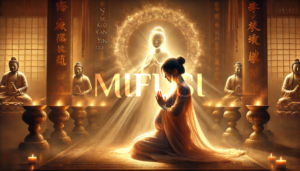
Spiritual experience of Hue Anh
Spiritual experience of Hue Anh Trang đạo của Huệ Anh by Hue Anh on 06 Feb 2018, 15:03 - translated...
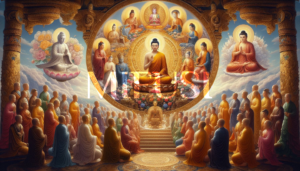
Atheists Trumps Fanatics
Atheists Trumps Fanatics Thà là người vô thần... by Dianichi on Wed Nov 19, 2008 3:04 pm Sure, here's a...
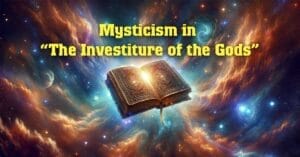
YUN ZHONG ZI OFFERS THE MAGIC SWORD
Yun Zhong Zi is an Immortal residing in Chung-Nam Mountain. One day, while gathering herbs, he noticed an evil aura...

QUINTESSENCE OF ESOTERIC BUDDHISM: SPECIAL CHAPTER
SPECIAL CHAPTER The Celestial Scroll for the transmission of the Secret Doctrine (secret seal) This is the sacred Yantra...
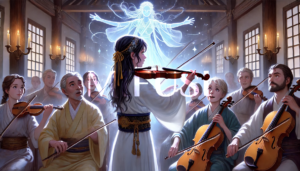
A Violin Performance by Divine Force
A Violin Performance by Divine Force LÀM ĐẠO VỚI CÂY ĐÀN VIOLIN posted by viendung on 07 Apr 2017, 12:04,...

FIREWALKING: A PARADOXICAL PHENOMENON
FIREWALKING: A PARADOXICAL PHENOMENON (Đi trên than đỏ bị phỏng nặng và phép lạ by hoatam on 09 May 2009,...

Chapter VI: II – Ucchusma Lectures On The Dharani Of Great Satisfaction And Wonderful Magic
II.Ucchusma Lectures On The Dharani Of Great Satisfaction And Wonderful Magic. North India, tripitaka master Ajitasena (the Invincible General) translated...

Story 9 – Pac Bo Cave
Story 9 - Pac Bo Cave Câu chuyện số 9 - Hang Pắc Bó by ThầyGià - 12 November 2008,...
